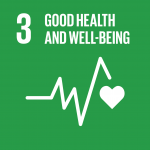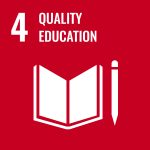Yogyakarta, June 24, 2025 — The Department of Mathematics, Faculty of Mathematics and Natural Sciences, Gadjah Mada University is hosting the MIDSEA Summer School 2025, a collaborative scientific forum bringing together participants from various Southeast Asian countries to explore strategic issues in mathematics and its applications. One of the subtopics discussed in this event is AI for Infectious Disease Modeling (AI4IDM), which focuses on the use of artificial intelligence to understand and anticipate the spread of infectious diseases.
In the main session of this subtopic, Thitiya Theparod, an active researcher in the fields of AI and public health, presented a session titled “Introduction to Foundation Models (sort of).” He began by explaining that within the broader framework of AI, there is a branch of machine learning, which gave rise to deep learning, and from there evolved into foundation models. This approach is now considered the most essential in many modern AI applications.
Foundation models are positioned as one of the pinnacles of AI technology evolution. These models can process extremely large amounts of data and can be reused for various tasks without needing to be retrained from scratch. In his presentation, Thitiya Theparod mentioned that foundation models like GPT-3, BERT, and DALL-E have hundreds of millions of parameters, even exceeding the population of a country. With such scale and flexibility, these models serve as a crucial foundation for developing cross-domain intelligent systems, including in fields such as healthcare, language, and image analysis.
However, he also cautioned that not all AI models currently in use (including systems like ChatGPT) consistently produce accurate outputs. One example is language translation, which often fails to capture meaning accurately, especially in cultural contexts and local idioms. Therefore, Thitiya Theparod emphasizes the importance of deeper understanding so that we can use foundation models responsibly. “We need to learn more to use AI effectively,” he said.
The material also touches on the comparison between traditional models and foundation models. Traditional models are specific to a single task, require a large amount of training data, and cannot be reused. Foundation models, on the other hand, are more flexible, data-efficient, and adaptable to various new tasks. With the same input, training, and output approach, foundation models can produce much richer results. Even concepts like linear regression can be considered part of a larger, more complex blackbox model within this framework.
After the training session, participants were divided into small groups to discuss pre-selected scientific articles. One group discussed a paper titled “DengueNet: Dengue Prediction using Spatiotemporal Satellite Imagery for Resource-Limited Countries.” This paper introduces DengueNet, a dengue case prediction model based on satellite imagery that combines Vision Transformer, Radiomics, and LSTM. The group discussion highlighted how this approach offers a potential solution for regions with limited manual surveillance systems.
All group presentations were active and followed by open discussions, combining technical analysis with reflections on real-world application contexts. The AI subtopic in the MIDSEA Summer School 2025 also served as a productive space to bridge theoretical knowledge and multidisciplinary practices, while encouraging the use of technology that is not only advanced but also ethical and inclusive.
 Keywords: MIDSEA, Modelling, Infectious Disease Modelling
Keywords: MIDSEA, Modelling, Infectious Disease Modelling
Author: Chyntia Meininda Anjanni
Photo: Priscilla Deviana T.


